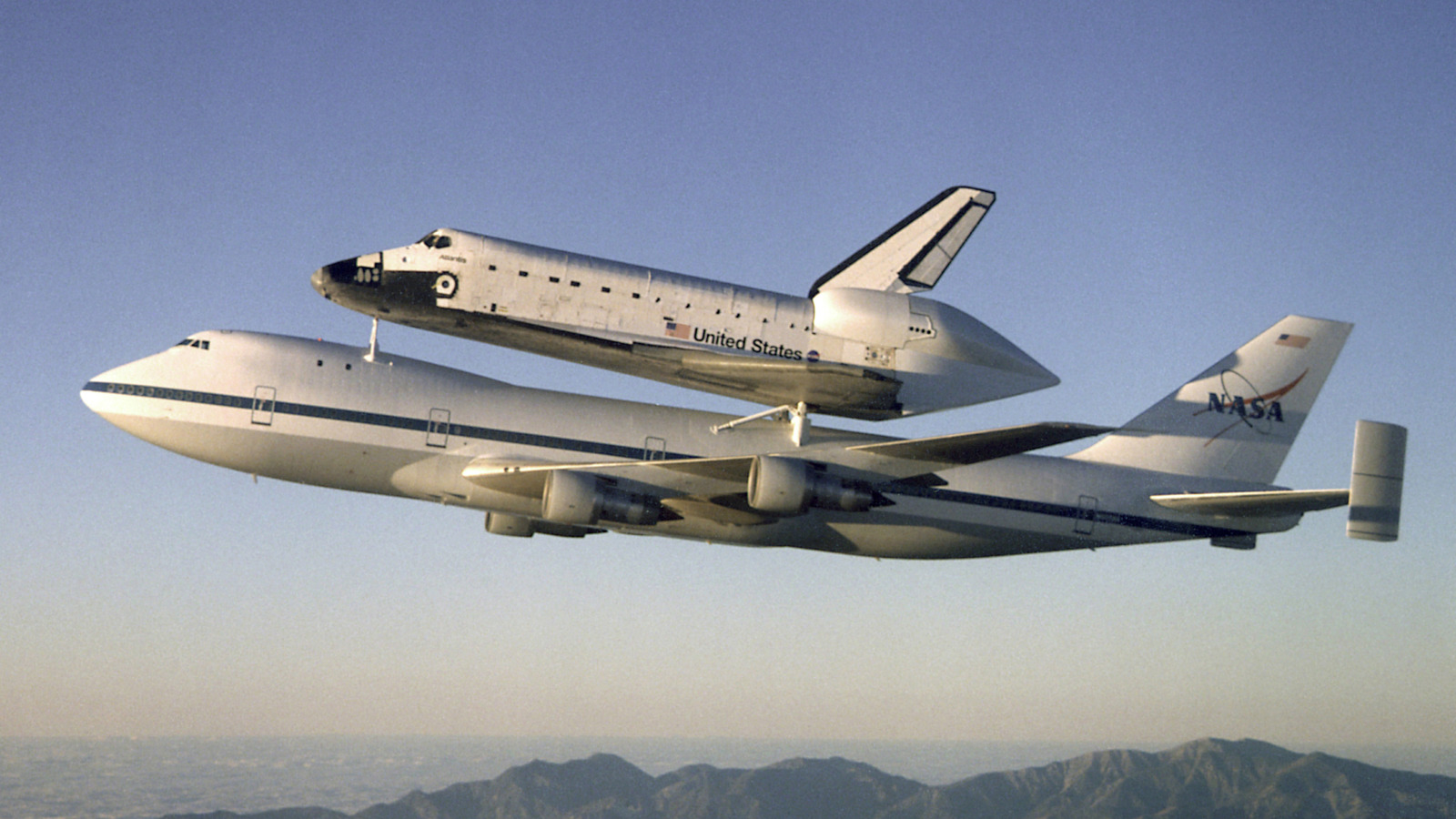Business
NASA Chooses Boeing 747 to Transport Space Shuttles Safely

NASA’s decision to utilize a modified Boeing 747 for transporting space shuttles revolutionized the logistics of American spaceflight. This arrangement began in 1974 when the agency sought a reliable method to return shuttles that landed at Edwards Air Force Base in California back to their home at Kennedy Space Center in Florida. The Boeing 747, specifically designed for high-capacity air travel, was chosen for its low-wing profile and stable tail configuration, making it an ideal carrier for the iconic shuttles.
The space shuttle program, which ran for over three decades, marked significant milestones in space exploration. Across its 135 missions, shuttles played crucial roles in deploying the Hubble Space Telescope and constructing the International Space Station, among other achievements. The 747 Shuttle Carrier Aircraft (SCA) became essential in ensuring that these monumental missions could continue smoothly.
Why the Boeing 747 Was the Preferred Choice
NASA initially considered two aircraft for this task: the Boeing 747 and the Lockheed C-5 Galaxy. Ultimately, the 747 was selected due to its design advantages. NASA could fully own a 747, while any C-5 would have been leased from the Air Force. The modifications made to the 747 included installing three struts on the fuselage to securely attach the shuttle and adding two additional stabilizers to the tail for improved airflow and stability.
The interior of the 747 underwent significant alterations to accommodate the extra weight of the shuttle, which added approximately 170,000 pounds. Structural reinforcements were necessary, and most internal seats and panels were removed to save weight, allowing only first-class seats for NASA personnel during transport missions.
The Journey of the Shuttle Carrier Aircrafts
NASA’s first 747, designated as NASA 905, played a pivotal role in the shuttle program. After its modifications, it participated in the Approach and Landing Tests in 1977, where it successfully lifted the shuttle into the air for its initial glide tests. Following these tests, NASA 905 began the crucial task of transporting shuttles that landed in California back to Cape Canaveral.
Although this method was much faster than overland transportation, it was not without challenges. After landing, a team of over 170 engineers was required to assist in loading and unloading the shuttles, a process that proved cumbersome. The presence of the shuttle also limited the aircraft’s operational range to about 1,000 miles, with speeds restricted to Mach 0.6 and a maximum altitude of 15,000 feet. Consequently, returning a shuttle to Florida could take up to three days.
In 1989, NASA acquired a second 747-100SR from Japan Airlines, which was modified to become NASA 911. Together, these two aircraft completed a combined total of 87 flights transporting shuttles from the Pacific back to the Atlantic during the Shuttle Program.
Upon retiring the space shuttle program in 2011, both SCAs played a significant role in delivering the remaining shuttles to their final homes in museums across the United States. This marked the conclusion of a remarkable era in space exploration and highlighted the invaluable contribution of the Boeing 747 in making these historic missions possible.
The legacy of the Boeing 747 as a Shuttle Carrier Aircraft stands as a testament to innovative engineering and the pioneering spirit of NASA’s space exploration endeavors.
-

 Lifestyle5 months ago
Lifestyle5 months agoLibraries Challenge Rising E-Book Costs Amid Growing Demand
-

 Sports4 months ago
Sports4 months agoTyreek Hill Responds to Tua Tagovailoa’s Comments on Team Dynamics
-

 Sports4 months ago
Sports4 months agoLiverpool Secures Agreement to Sign Young Striker Will Wright
-

 Lifestyle4 months ago
Lifestyle4 months agoSave Your Split Tomatoes: Expert Tips for Gardeners
-

 Lifestyle4 months ago
Lifestyle4 months agoPrincess Beatrice’s Daughter Athena Joins Siblings at London Parade
-

 Science4 months ago
Science4 months agoSan Francisco Hosts Unique Contest to Identify “Performative Males”
-

 World4 months ago
World4 months agoWinter Storms Lash New South Wales with Snow, Flood Risks
-

 Science5 months ago
Science5 months agoTrump Administration Moves to Repeal Key Climate Regulation
-

 Business5 months ago
Business5 months agoSoFi Technologies Shares Slip 2% Following Insider Stock Sale
-

 Science5 months ago
Science5 months agoNew Tool Reveals Link Between Horse Coat Condition and Parasites
-

 Sports4 months ago
Sports4 months agoElon Musk Sculpture Travels From Utah to Yosemite National Park
-

 Science5 months ago
Science5 months agoNew Study Confirms Humans Transported Stonehenge Bluestones









